
© Jacklyn Meduga/Works & Process at the Guggenheim. (Click image for larger version)
Works and Process with Justin Peck
New York, Guggenheim Museum
14 April 2014
www.justin-peck.com
www.guggenheim.org
Event details
Justin Peck interview (Sept 2012)
Balanchine’s Early Years, with Elizabeth Kendall and Troy Schumacher
New York, 92nd Street Y
13 April 2014
www.92y.org
Event details
Troy Schumacher interview (Jan 2013)
Somethin’s Coming, Somethin’ Good
Something is brewing at New York City Ballet. After the departure of Christopher Wheeldon, the company’s resident choreographer, in 2008, to found his company (Morphoses), there was a period of mourning. Would there be any decent new choreography for these phenomenally-quick, musically-attuned dancers to tackle, or had they (and we) been condemned to a depressing series of lackluster premières by second-rate imports like Mauro Bigonzetti and Angelin Preljocaj? There was no shortage of these – remember Oltremare? – but now it has become clear that all the while, a new alchemy of ideas was churning away within the company’s ranks, encouraged in part by Wheeldon’s long tenure and the successes of Benjamin Millepied, a former colleague who is now the head of the Paris Opéra Ballet.
To be sure, the periodic injections of mad creativity supplied by Alexei Ratmansky – Russian Seasons, Concerto DSCH, Namouna – were a major contributor to this awakening. Because it has now become clear that ballet is undergoing an important evolution, and I’m not referring to the overwrought, effect-laden mannerisms of much of what is referred to as “contemporary ballet.” This is a change that is blossoming within ballet’s own idiom, using the specific skill-set of ballet dancers: jumping, turning, balancing, sliding, skittering on pointe, flickering the legs at warp speed, tipping and extending hyper-articulate bodies. Men partner men, extending their range; women catch and assist their male partners; the hierarchy of principals and corps is dissolved and and reconceived in myriad ways; stories are implied, but fractured.
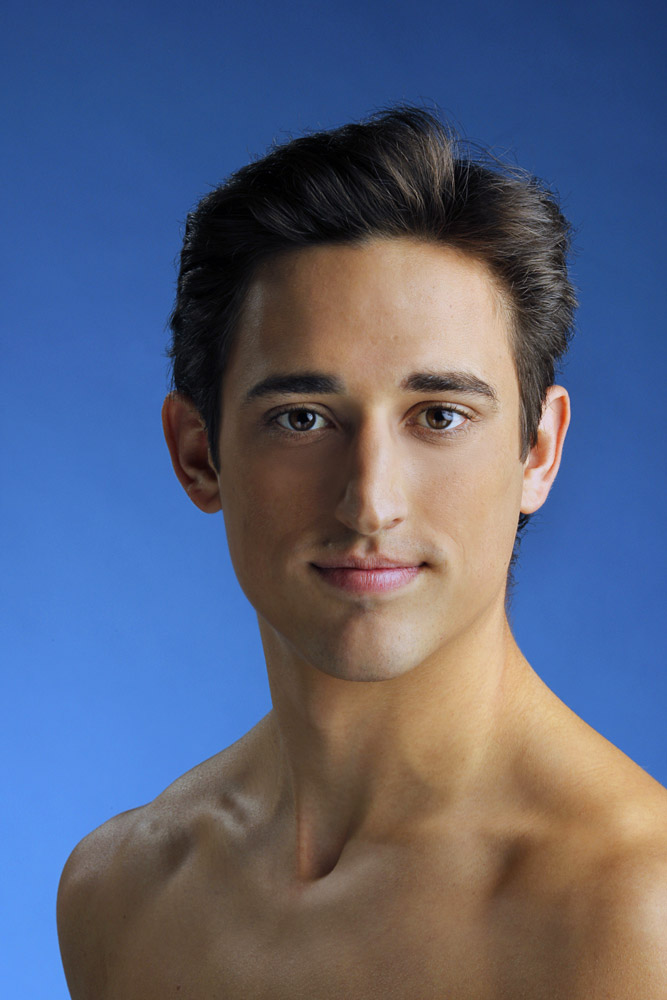
© Paul Kolnik. (Click image for larger version)
Out of this maelstrom popped Justin Peck, practically fully-formed as a choreographer, with a recognizable style and a sophisticated approach to form and the movement of crowds. His Year of the Rabbit, which premiered in 2012, was both a surprise – where did this come from? – and, somehow, an obvious next step for the company. It wasn’t perfect but it felt right. The steps and groupings were fresh, informed by Balanchine and Robbins and Ratmansky (especially), with a little Nijinska thrown in, but also quirky and personal and new. And there were just so many ideas tumbling around the stage, all of them thrillingly connected to the music. Then there was Peck’s choice of music, a suite by the interestingly soulful neo-folk-balladeer, Sufjan Stevens, a cult figure for certain Brooklyn hipsters but an unknown in uptown ballet circles. His music turned out to be refreshingly substantial, honest, rhythmically jagged. Its off-kilter syncopations and multi-hued orchestration – by Michael P. Atkinson – felt alive, not pre-packaged and sleekly minimalist or finicky and hyper-cerebral like so much of the contemporary classical music being produced by the Nico Muhlys and David Langs of this world.
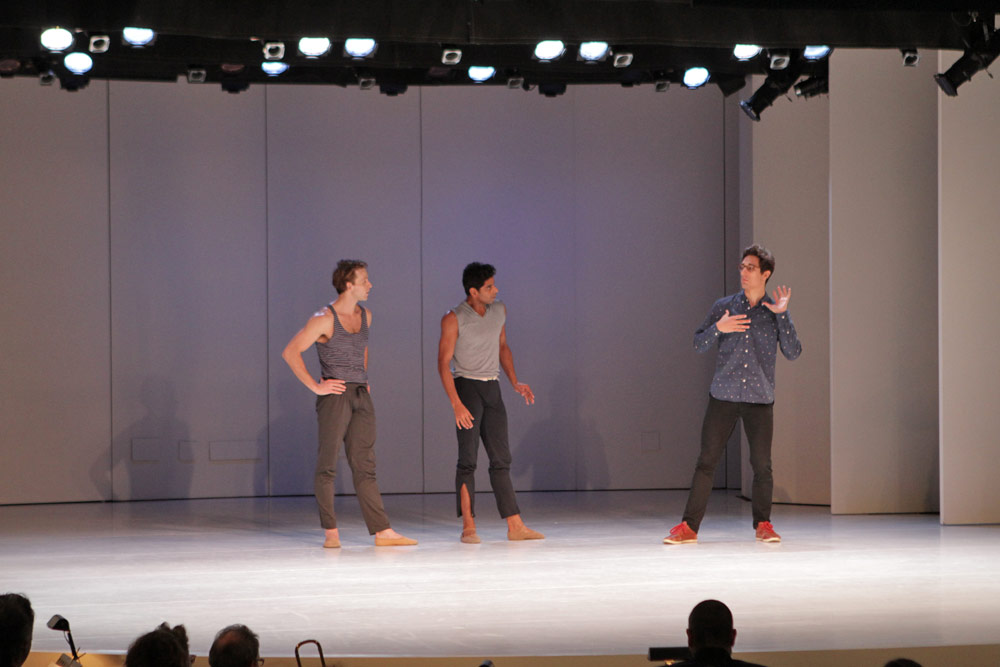
© Jacklyn Meduga/Works & Process at the Guggenheim. (Click image for larger version)
City Ballet is about to première Peck’s newest work, Everywhere We Go, at its Spring Gala on May 8. A Works and Process at the Guggenheim revealed a few excerpts, as well as some of its stage designs, and it was hard not to feel that something very exciting was afoot. Peck is thoughtful, detail-oriented, imaginative, and smart. At a certain point during the evening, working with a couple of his dancers onstage (Adrian Danchig-Waring and Amar Ramasar), he explained a moment in which the two men stand close together, one slightly behind the other, their arms interlocking in a striking composition of angles and curves: “You’re like a fighter pilot,” he said to the one in front, “locked into armor.” Later in the same duet, he described the relationship between their two bodies in another sequence: “it’s like you’re connected by a cobweb, and you don’t want to break it.” Hard and soft, diaphanous and solid. It was all so clear in Peck’s mind, just what he was looking for.
Throughout the demonstration, Peck’s ability to create images and contrasting textures – stretched-and-goopy swoops punctuated by lightning-quick changes of direction and light and fast steps extending into moments of weightedness or buoyancy – created visual interest, tension, and an almost physical stimulation. It was alive. There’s a very particular quality to his partnering, too: light, airy, almost anti-gravitational – the women seem to practically lift themselves, with very little visible help from the men. We won’t know how well Everywhere We Go will work as a whole until the première, but I can’t wait to see it.

© Paul Kolnik. (Click image for larger version)
This will be Peck’s first piece to feature a major design component, and the honors have gone to the Brooklyn-based architect Karl Jensen, who has created highly-geometric, almost op-art patterns that slide past each other on scrims. Like the dancing, the visual element is highly architectural and structured and multi-faceted. Hopefully, it won’t be too busy or distract from the dancing. Peck’s musical collaborator, once again, is Sufjan Stevens who, despite his artful reticence and self-deprecating vibe – “I wonder, is the music too obvious, too explicit?” – has clearly made his mark on the ballet. In fact it was Stevens who proposed the theme for a trio for Tiler Peck, Teresa Reichlen, and Amar Ramasar seen at the Guggenheim (see video below). Set to roiling arpeggios in shifting keys, the dancers spun and reached, chasing each other even as they traded places in relation to each other and switched directions, like busy and highly-charged particles on tangential trajectories. “I had just watched Philip Glass’s Einstein on the Beach,” Stevens said, “and then I went and wrote something flourishy and Romantic. I just wanted the dancers to spin for three minutes.”
The image of spinning bodies, open, free, fully extended, seems to have seeped into Peck’s consciousness; it would return, in different permutations, in several of the examples seen at the Guggenheim.

Book cover, © Oxford University Press.
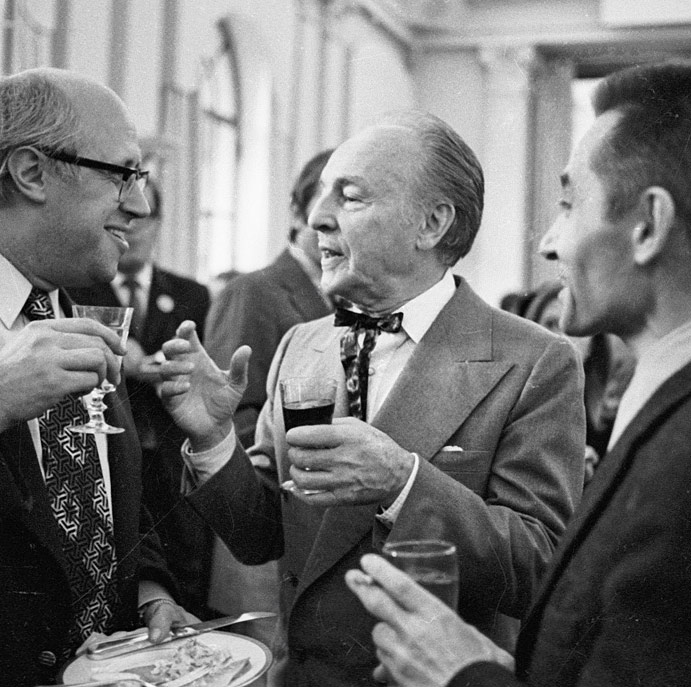
From Wikipedia – full attribution: RIA Novosti archive, image #32796 / Alexander Makarov / CC-BY-SA 3.0. (Click image for larger version)
The theme of the event at the Y was the young Balanchine. Kendall showed pictures of the choreographer’s family and schoolmates a the Imperial ballet school and read from her book, a vivid evocation of St. Petersburg before, during and just after the Russian Revolution. A time when food was scarce, but, at least among the graduating class of dancers, spirits were high. Young chorographers like Balanchine seized on the possibilities for personal expression and revolutionary experimentation, encouraged by the flowering of the Russian avant-garde. This was the atmosphere in which Balanchine created his first works, which were considered by many strangely acrobatic and a bit risqué.
Riffing on these ideas, Schumacher created two short pas de deux, inspired by some of Balanchine’s early experiments. The first, “Kreisler Suite,” for Rebecca Krohn and Jared Angle (of City Ballet), was set to faintly Romantic, folk-infused music by the Austrian violinist Fritz Kreisler. Schumacher’s choreography was musical, expansive, warm. He showed off Krohn’s expressive back, and her capacity for thoughtful stillness. She and Angle seemed to speak with each other with their eyes, as if sharing a slightly wistful memory. They created a little bubble of intimacy. Schumacher used a series of low jumps, sissonnes, assemblés, and supported pas de chats to give the dancing a lilting rhythm, like a first waltz at a ball.

© Henry Leutwyler. (Click image for larger version)
The second duet (“With Us”), less self-consciously Balanchinean, was more characteristic of Schumacher’s own style. The novelty was that it was set to a piano étude also composed by Schumacher, an elegant, slightly jazzy piece punctuated by shifting textures and pauses. How many choreographers can compose their own music? The manner of the dance was more reminiscent of Robbins, with playfully turned-in knees, crouches, outstretched fingers, and a vivid sense of interplay. The dancers’ focus was on or away from each other rather than toward the audience. Schumacher danced with his fiancée, Ashley Laracey, a luminous new soloist at City Ballet with a look straight out of Edward Gorey’s The Lavender Leotard. Schumacher captures Laracey’s skittishness, her delicate femininity, and her elusiveness (shades of Balanchine). She never gives herself fully away. But, like many of his collaborative pieces, “With Us” had a start-and-stop quality that, while probably intentional, often interrupts the line, the sense of building toward a greater whole. It registers as a series of moments, of mini-events – all of them compelling and alive – rather than as a story.
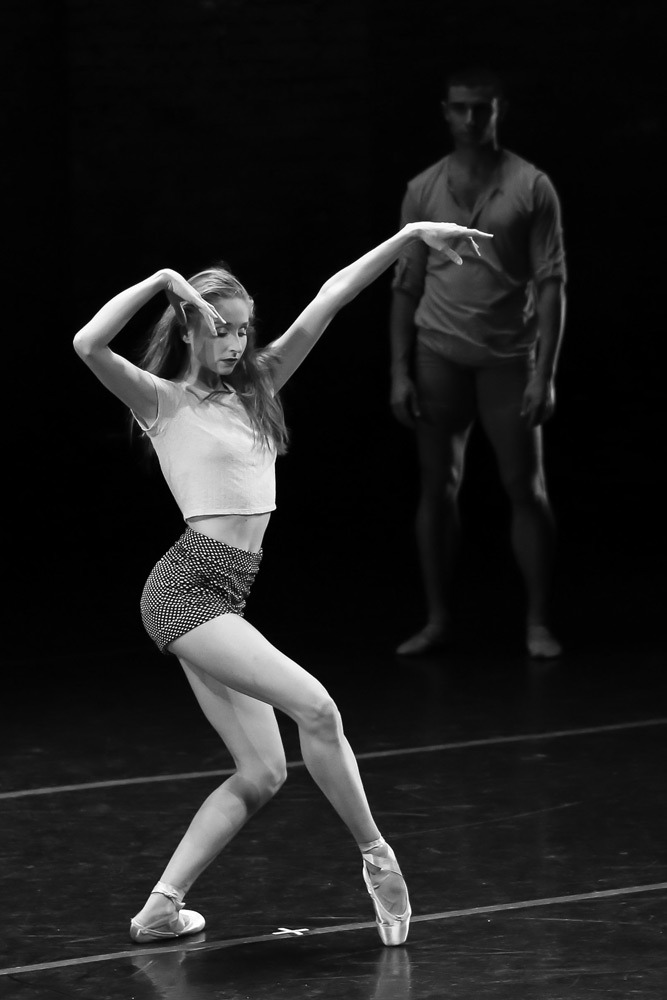
© Ani Collier, provided by Troy Schumacher. (Click image for larger version)
But it’s clear that Schumacher, like Peck, is trying to get at a different way of expressing emotion, illuminating the interactions between dancers, and playing with musical structure. And this is what makes their dances worth watching.












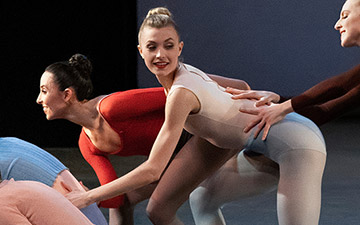
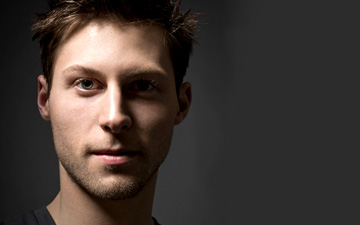

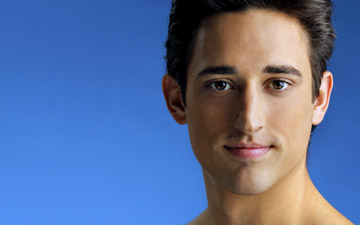

You must be logged in to post a comment.